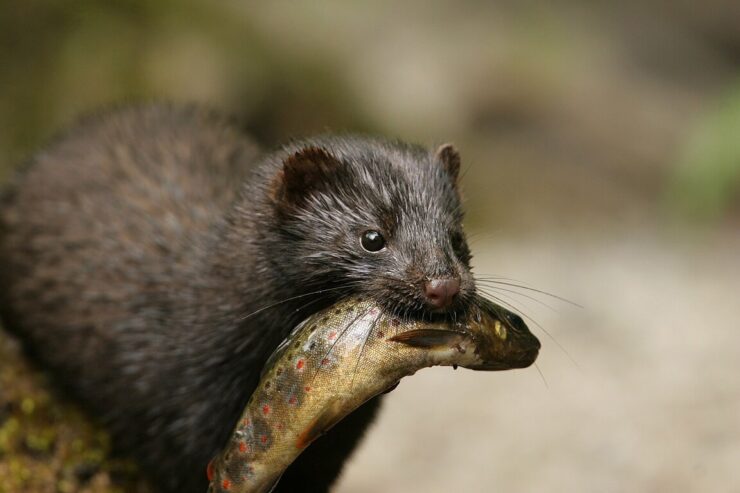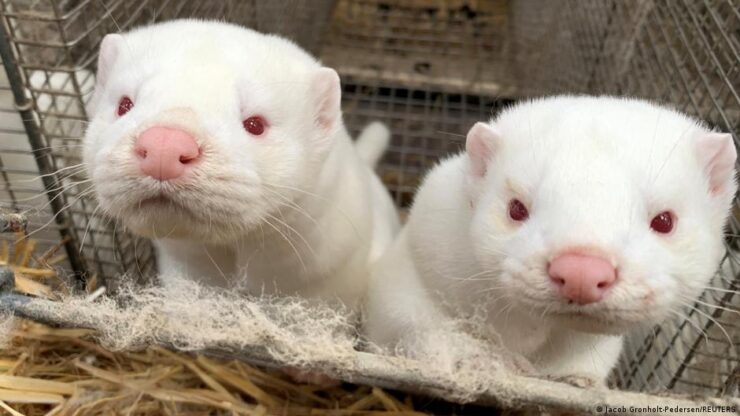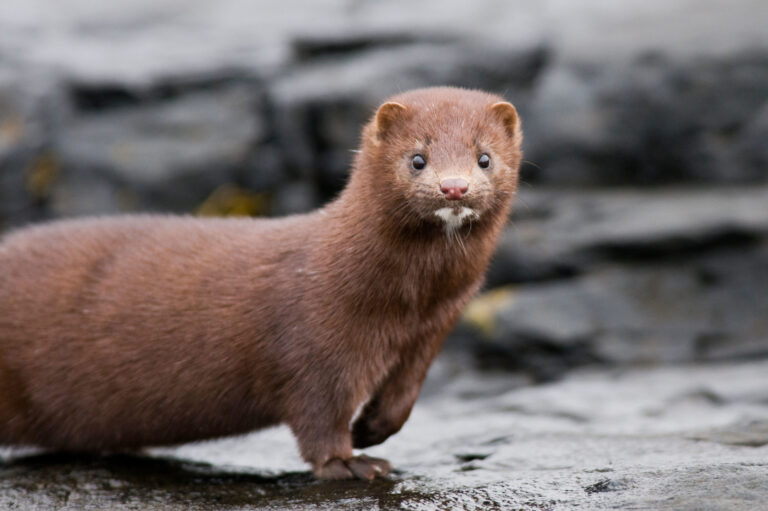Keeping an exotic animal at home can certainly be challenging. But what if you want to do a good thing and save a mink from being killed in order to make a coat from its fur? Can they adapt to being home pets at all? Let’s find out.
Most people believe that minks are extremely aggressive and practically untamable. While there is some truth to it, it’s not exactly the case. Minks can adapt well to living in a home and on fur farms. Of course, if you bring a mature mink into your home, it’s unlikely that it will be well-behaved and do what you want. A different story if you buy a pup straight out of a fur farm when it’s still around 1-2 months old. With enough care and patience, you can train your baby mink to exist alongside you and turn it into a wonderful pet.
Cage to keeping

Of course, before buying out a mink pup, you should conduct thorough research on how to take care of it at home. Minks are playful and require a spacious cage, however, some owners let them wander around the apartment or their house freely. If you decide to keep a mink in a cage, you should opt for a metal one without any large gaps. Inside the cage, there needs to be a drinking bowl and feeder installed. Don’t forget about a litter tray, too. You’ll have to clean the cage often as mink’s excrements have a distinctive smell, just like the rest of the Mustelidae family.
You can’t keep your mink inside the cage at all times, however. It needs to get enough exercise daily. You can let it out to run around the house (just put away any valuables you don’t want to be accidentally destroyed) or take a walk outside and enjoy the fresh air.
If you opt for keeping your mink cage-free, you need to remember that you will have to keep an eye on it at all times. Minks are fast and agile. When in their territory, they will rearrange things the way they deem fit. If you don’t want anything of importance missing, be vigilant when you let your pet mink to its own devices.
Alternatively, you can invest in a medium-sized cage to keep your mink in it when you’re away from home. More than then, home mink are required to make their nests, so having their own corner will definitely help them to adapt faster. Interestingly, when people choose to let their newly acquired minks live free in the house, the minks adapt faster to coexisting with them.
One thing for certain: you won’t encounter any trouble with teaching a mink using a litter tray. They are clean animals, and even wild minks always keep their burrows in perfect order.
Something important to note: regular baths are a must for any mink. Minks are aquatic animals and love taking baths. If you have enough space, then you should install a medium pool near your house for your mink. If you live in an apartment, then you can arrange the bath time in a bath or a large enough bowl. This must be done daily, not a couple of times a week. It’s vital for a mink’s healthy development. If you live in a warm place or the weather is good, you can even take your mink to swim in a lake or a pond. But don’t force your mink to take a bath if it doesn’t seem willing. This can scare it. Remember, that at least one bath is required every day.
Mink feeding

Feeding a mink isn’t exactly a great challenge. They require around 200 g of food a day. This can be a special foodstuff or feed mixes, porridges, meat, fish, and seafood. By the way, you can choose almost every kind of meat (of course, after consulting a specialist), but for porridge, choose buckwheat or rice with added mince to it. Home minks won’t turn down fresh fruits and vegetables. Don’t forget to make sure your pet always has clean water in its cage.
Adult minks need to be fed two times a day, younglings require to be fed three or four times a day. A developing mink, a pregnant or feeding female requires more food. Minks aren’t known for eating as much as they possibly can, so there is no need to restrict their food intake. They will stop once they are sated.
Make sure that your mink gets enough protein with food. Veterinarians recommend giving your pet mink a vitamin complex to make sure it gets all the necessary nutrients. It’s worth noting that the quality of food directly affects a mink’s smell. Try finding a balanced diet so your pet won’t be too stinky.
Fur-bearing animals are prone to viruses and parasitological diseases. That’s why home minks need to be regularly checked and vaccinated and they also need to receive anthelmintic treatment. Your pet’s health depends on you.
Minks are capricious animals, and they only acknowledge one owner. They will treat the rest of the family neutrally, but sometimes they can show aggression towards them. Interesting fact: male minks are more lenient toward humans than female minks.
Rules of conduct with minks

The ones minks don’t tolerate are children. They usually aren’t careful with animals, and no mink will allow itself to be treated poorly. Be mindful of that if you have children but are planning to adopt a mink. Also, minks don’t like sharing the attention with other pets.
Minks act like a small tornado inside the house. Not only are they carnivores (and you shouldn’t forget that), but they also have an inexhaustible amount of energy. They will have no problems climbing up things, whether it’s a table, a wardrobe, or a bookshelf. Do you have curtains hanging anywhere? Yes, these won’t be much of a challenge for a mink. It’s better to think twice before installing a new TV or buying a game console if your mink can access that room. It can easily scratch or leave bite marks all over your new possessions. If you have potted plants, maybe it’s better to keep them outside of a mink’s reach, too. They can easily dig the plants out and scatter the soil all over the house.
Minks are very playful, so they love to play with everything in their reach, not only their toys. They also love having their own order in the house. If a mink decides something lying not where it’s supposed to be, it will drag that item to its burrow. This can be anything: a toothbrush, a shoe, socks, bags, anything you leave unsupervised. Never leave important things in the open if you don’t want to see them in your mink’s lair.
Mink can and will bite if provoked. It’s perfectly normal for a mink to bite. Sometimes they bite as hard as a regular cat, but in a certain situation a mink can bite down your limb with brutal force. You can train them out of this habit, but be patient.
Minks mark their territory. Both male minks and female minks. Where they will leave a mark depends on each specific mink. Someone will leave a mark in the corner of a room, but someone will leave their mark all the way across the room. You can’t really teach a mink not to do that, and spaying won’t change it. This is something you should bear in mind.
Also, even if you prove to be the perfect owner and meet every single of your mink’s needs, there is still a chance that your little pet will be unfriendly. No amount of love will change that, but it’s something we should make peace with: every living creature is different.
So, after you carefully researched the information available and weighed all the pros and cons before adopting a mink, you can begin searching for a fur farm you wish to buy the mink out of. Some farms allow you to choose a pup on your own, others simply hand you out the one they picked.
How to make sure your future pet mink will be healthy? First of all, take note of the mink’s behavior. If it acts playfully and is rather loud, and very active, that’s a good sign. A mink’s fur should be clean (this may not always be true, considering the conditions of living on a fur farm) and glossy, there shouldn’t be any visible wounds or cuts, and the area under a mink’s tail should be dry, without any leftover excrements. This is how you make sure your mink pup is healthy.
Home minks are rather demanding animals, but not particularly high-maintenance. They need your attention, care, and affection, and, most importantly, a vast amount of patience for plenty of their mischief. If you are ready to become a mink owner then this beautiful animal will become your faithful friend for seven or eight years!
Read more on: https://recommend24.com/category/pet-supplies/

